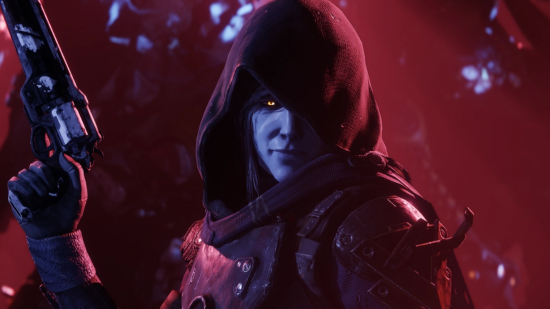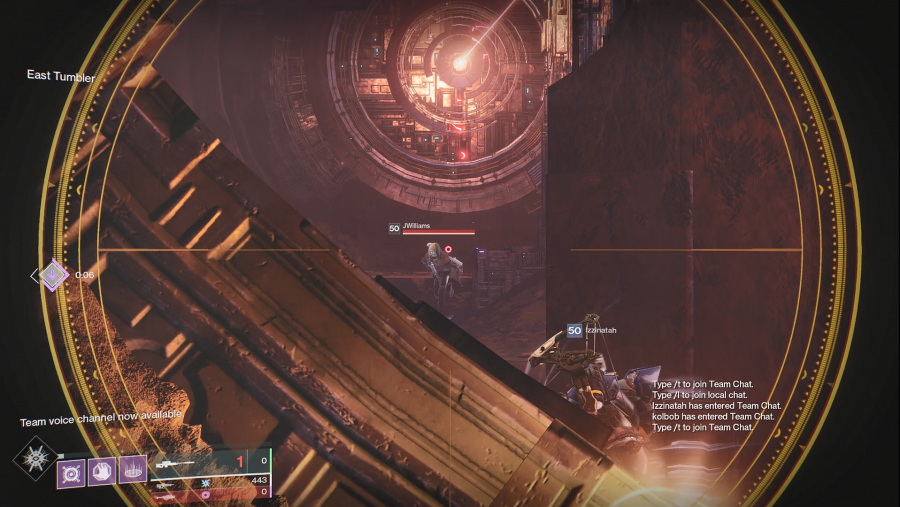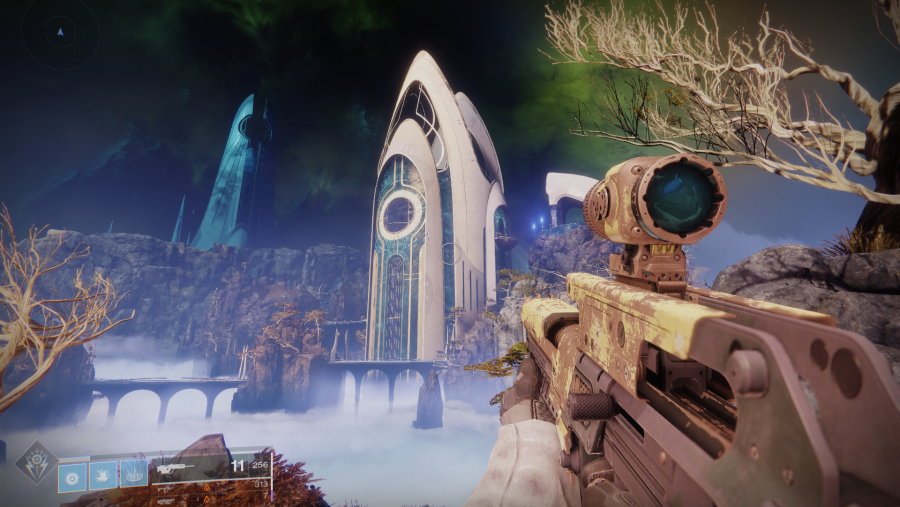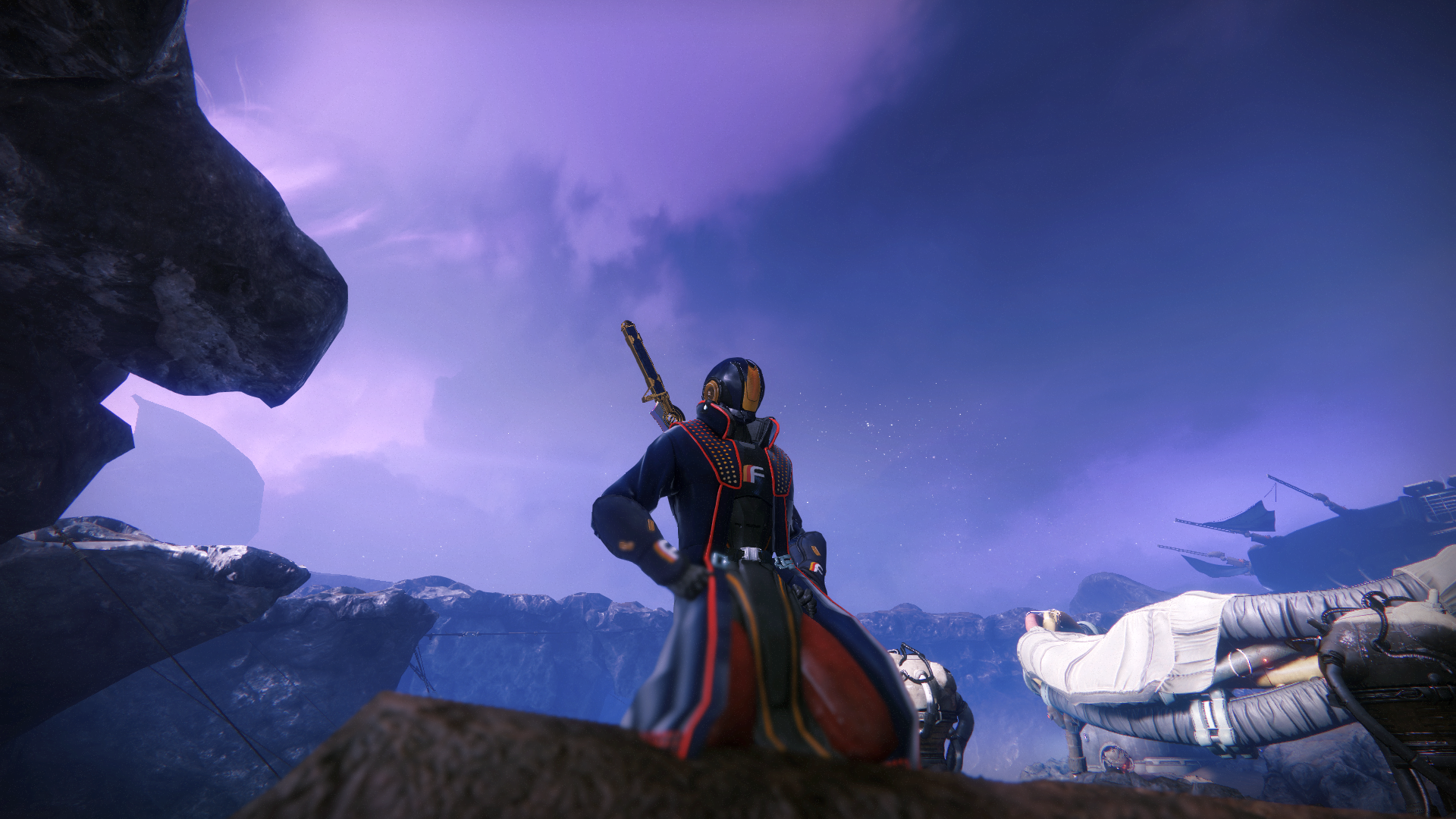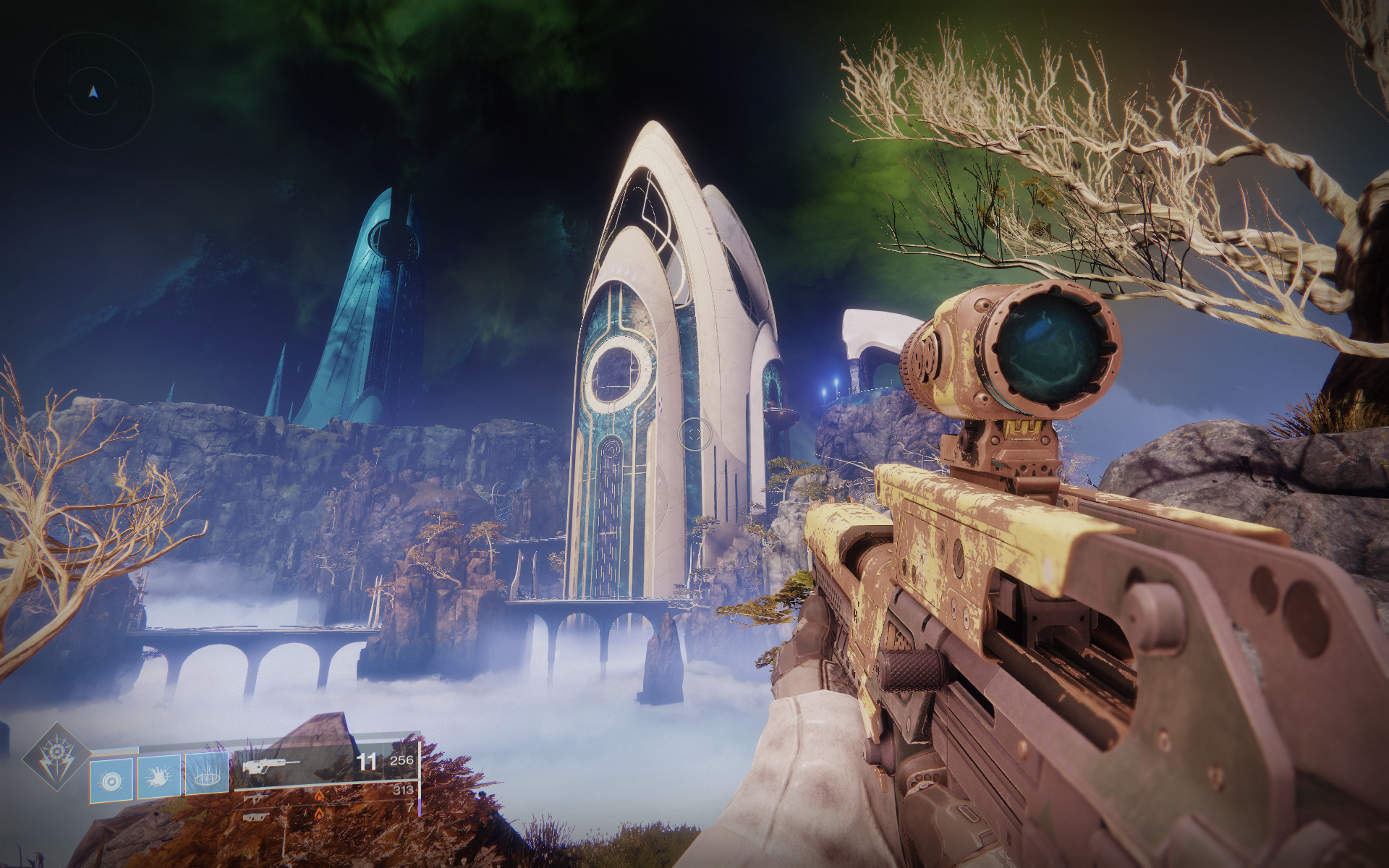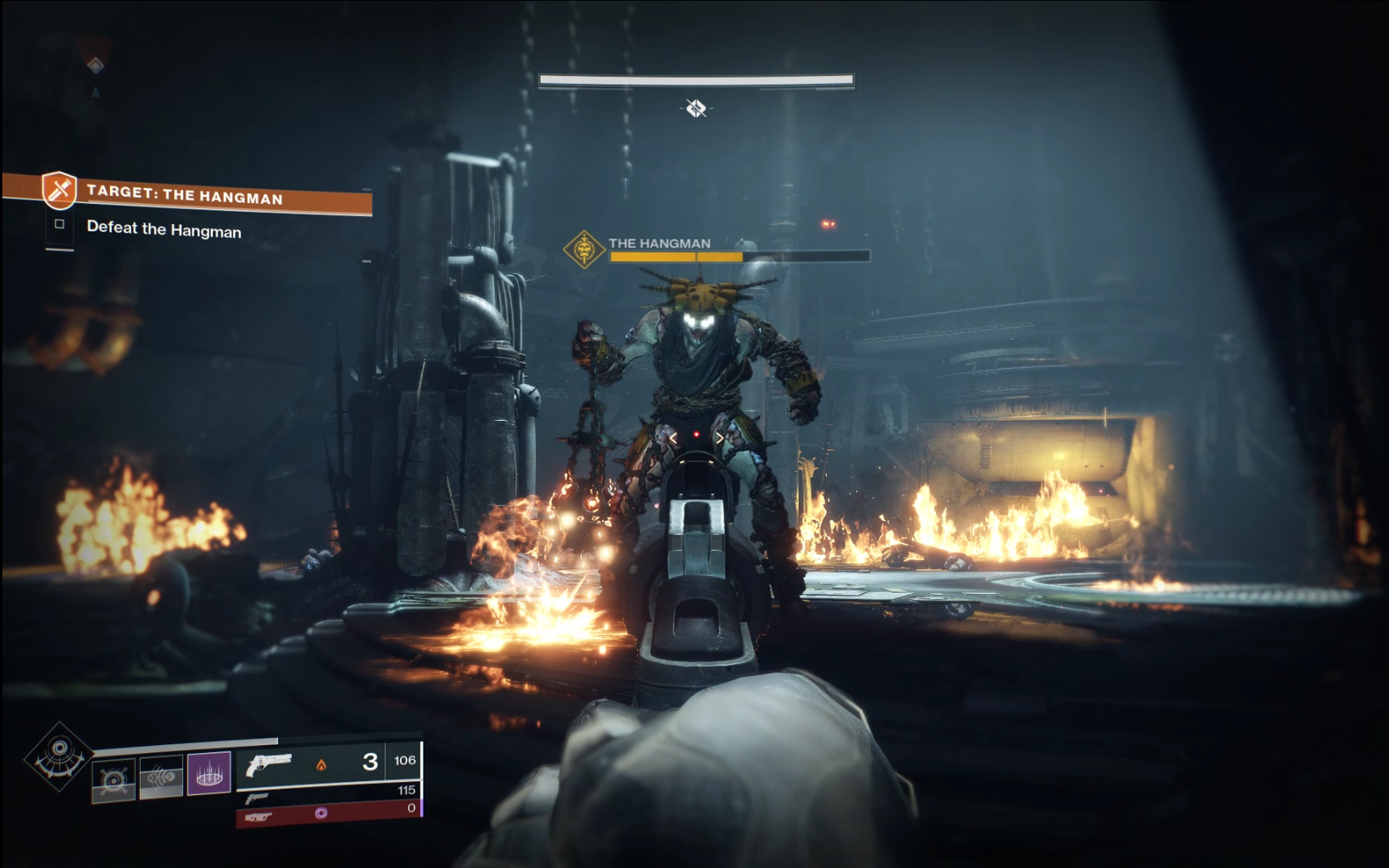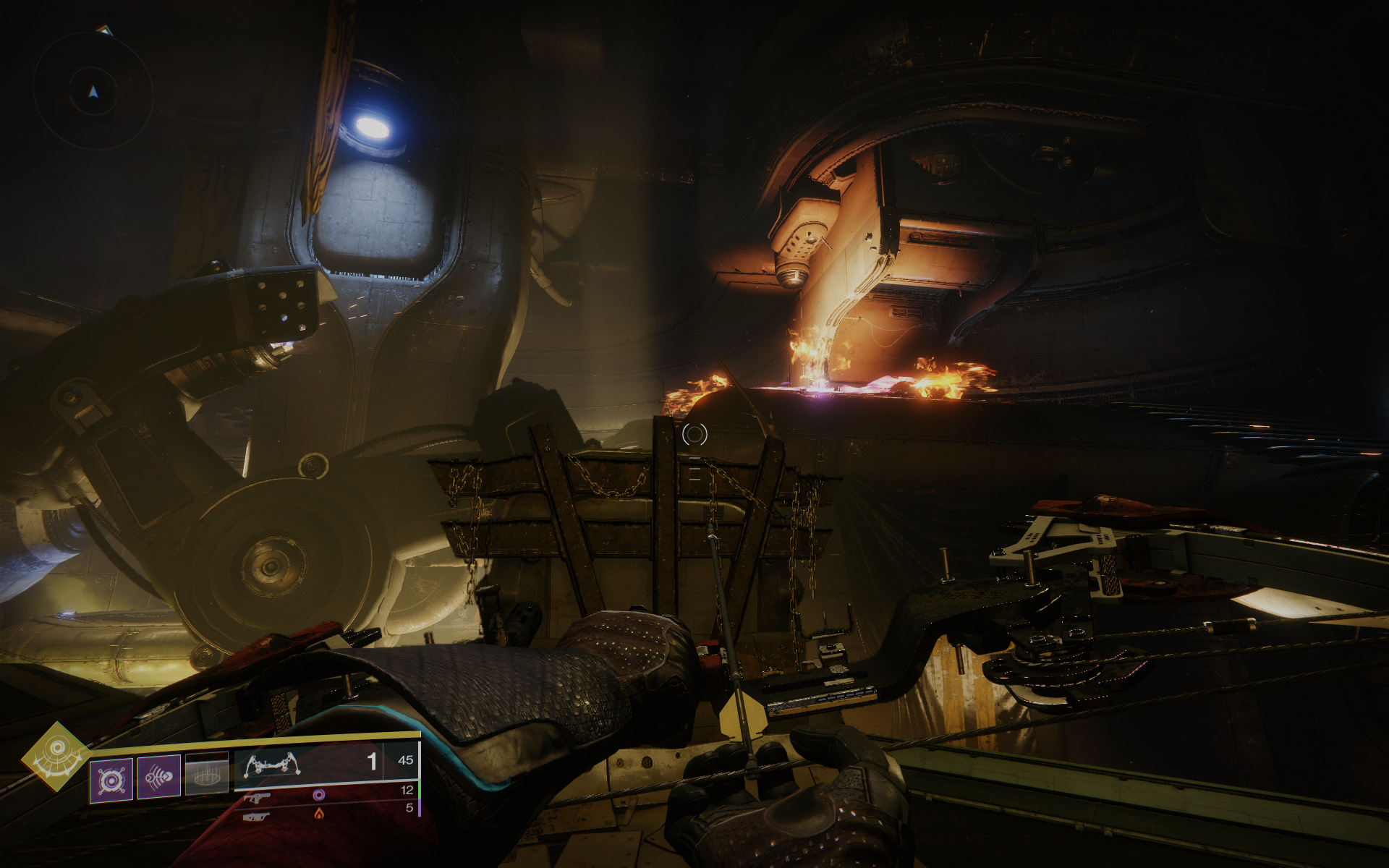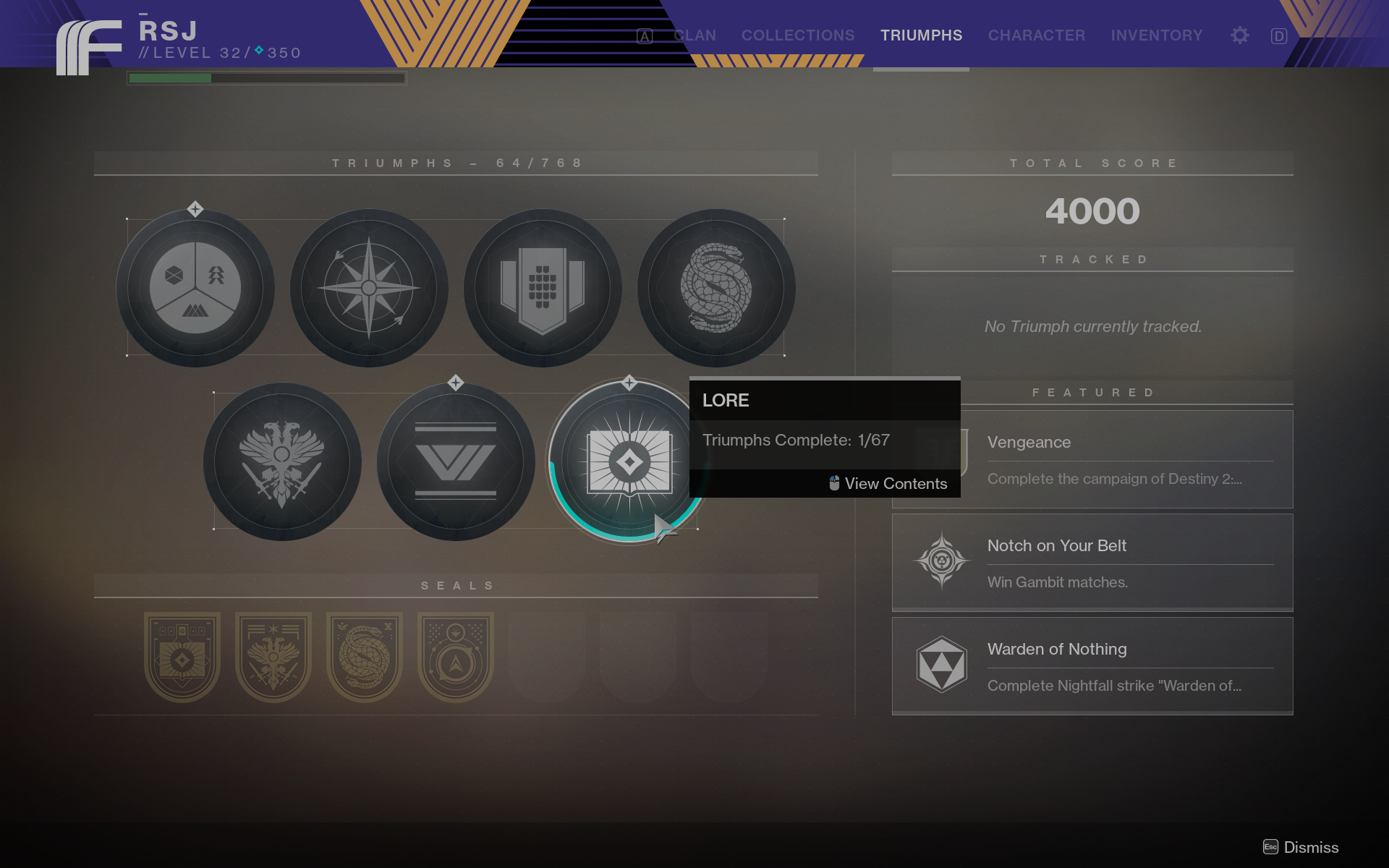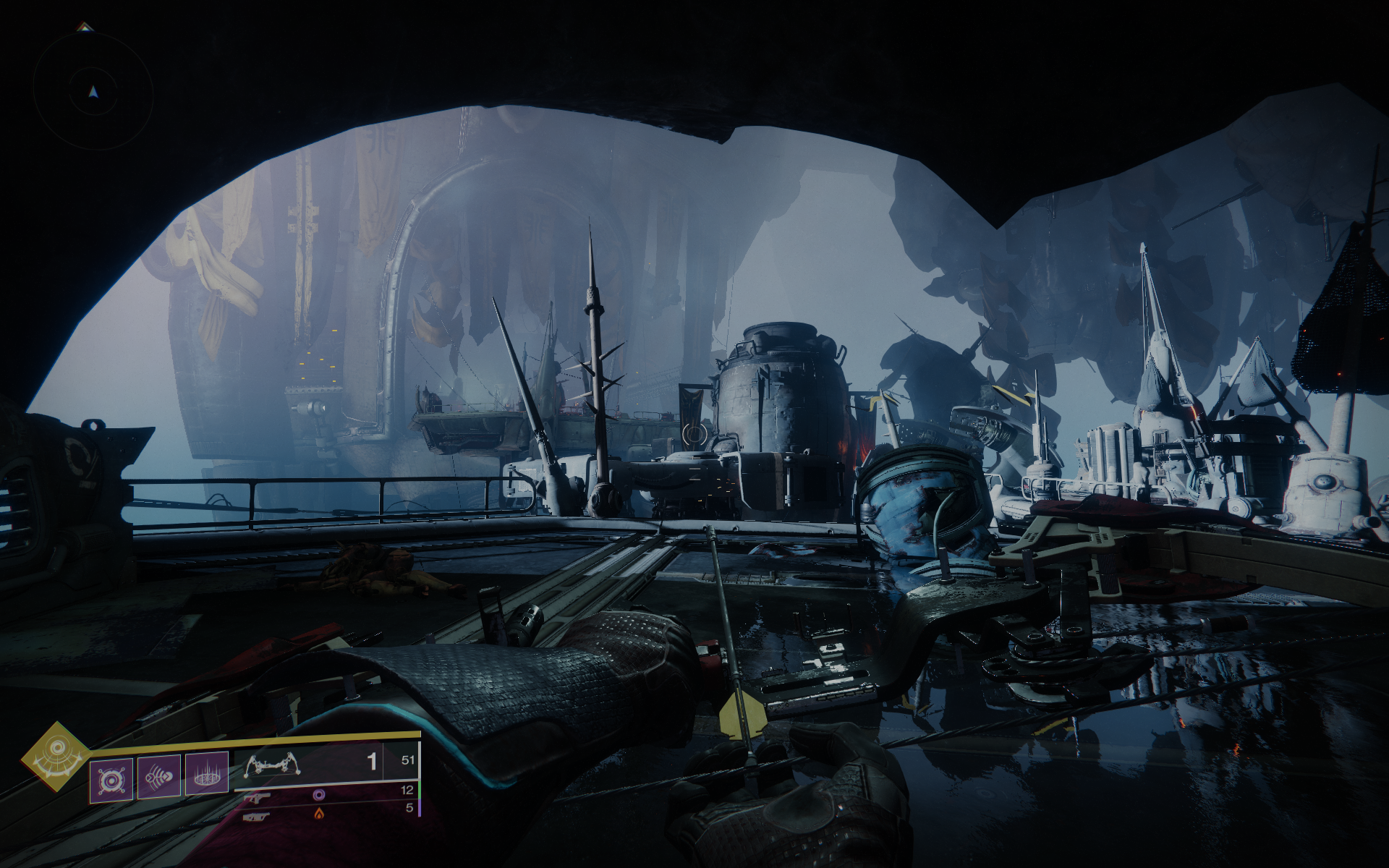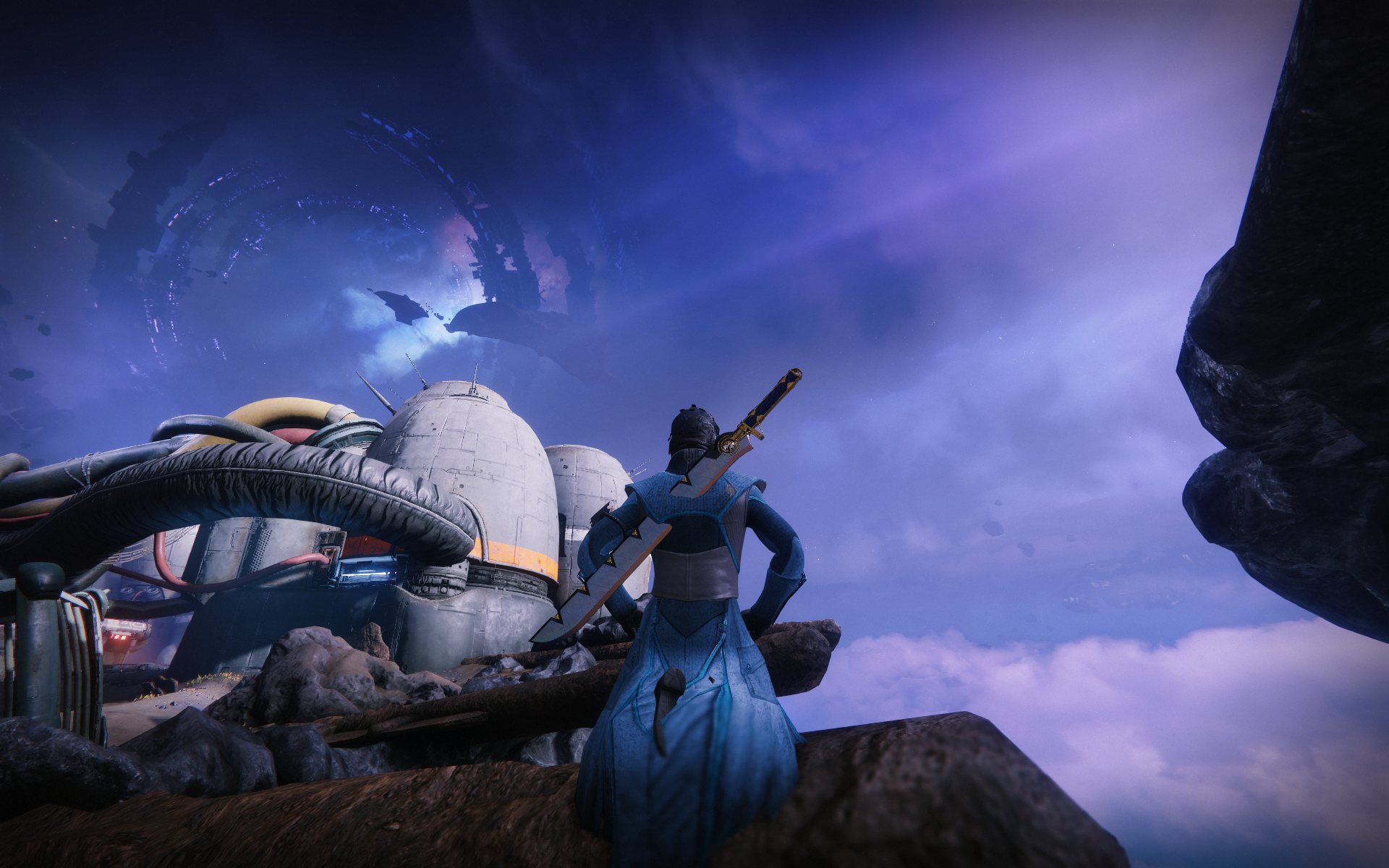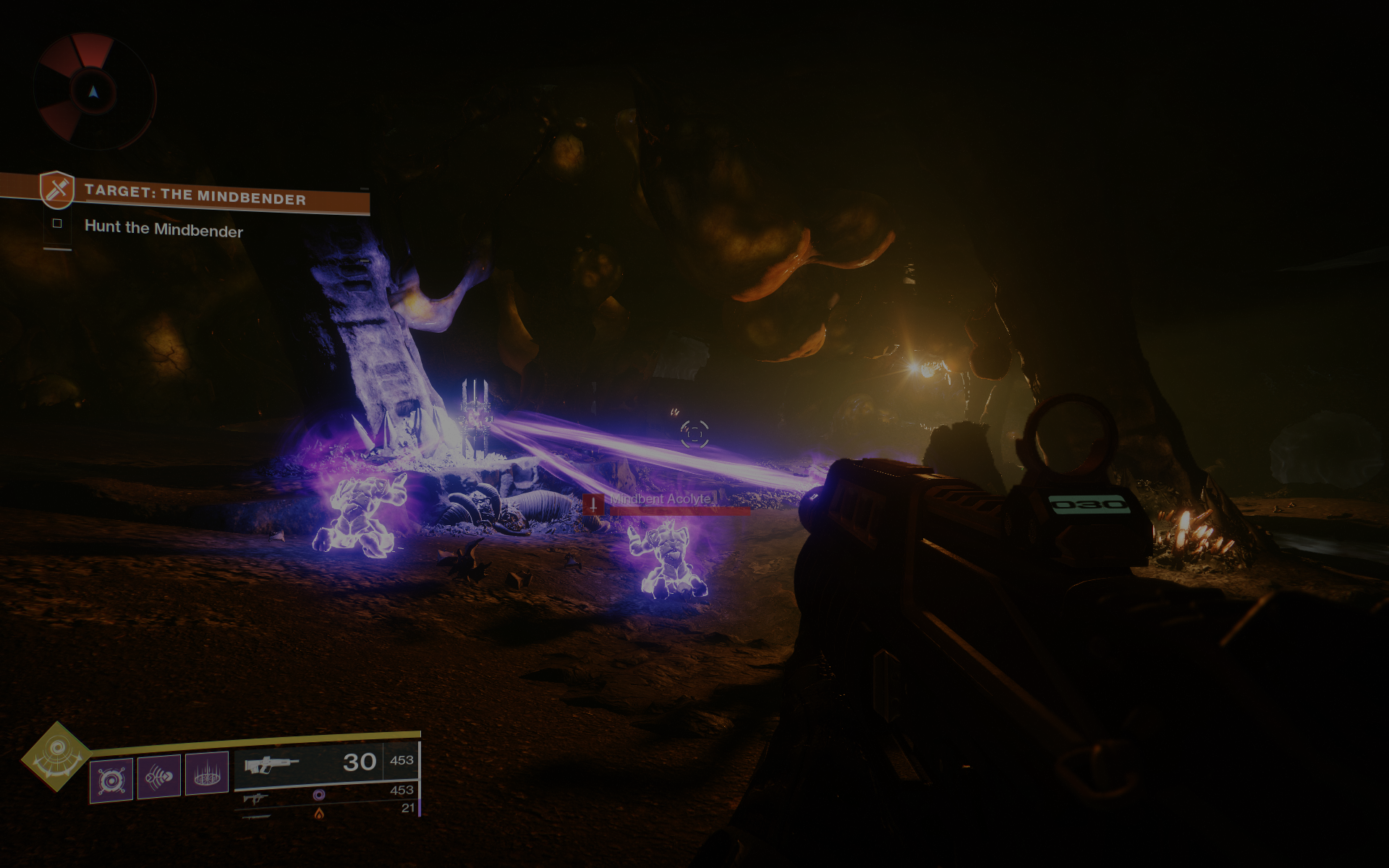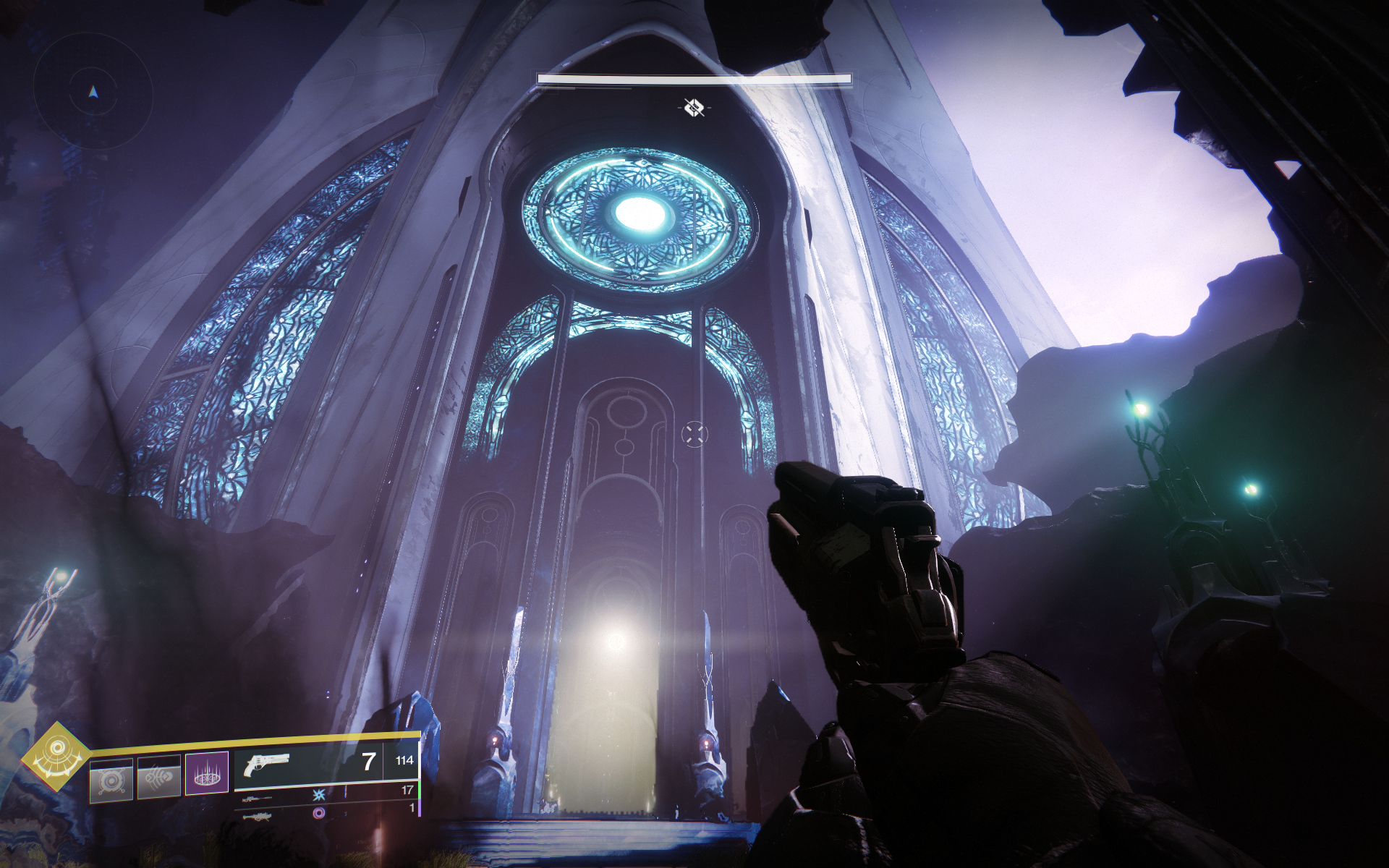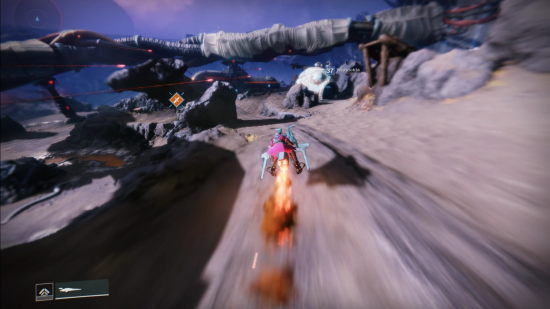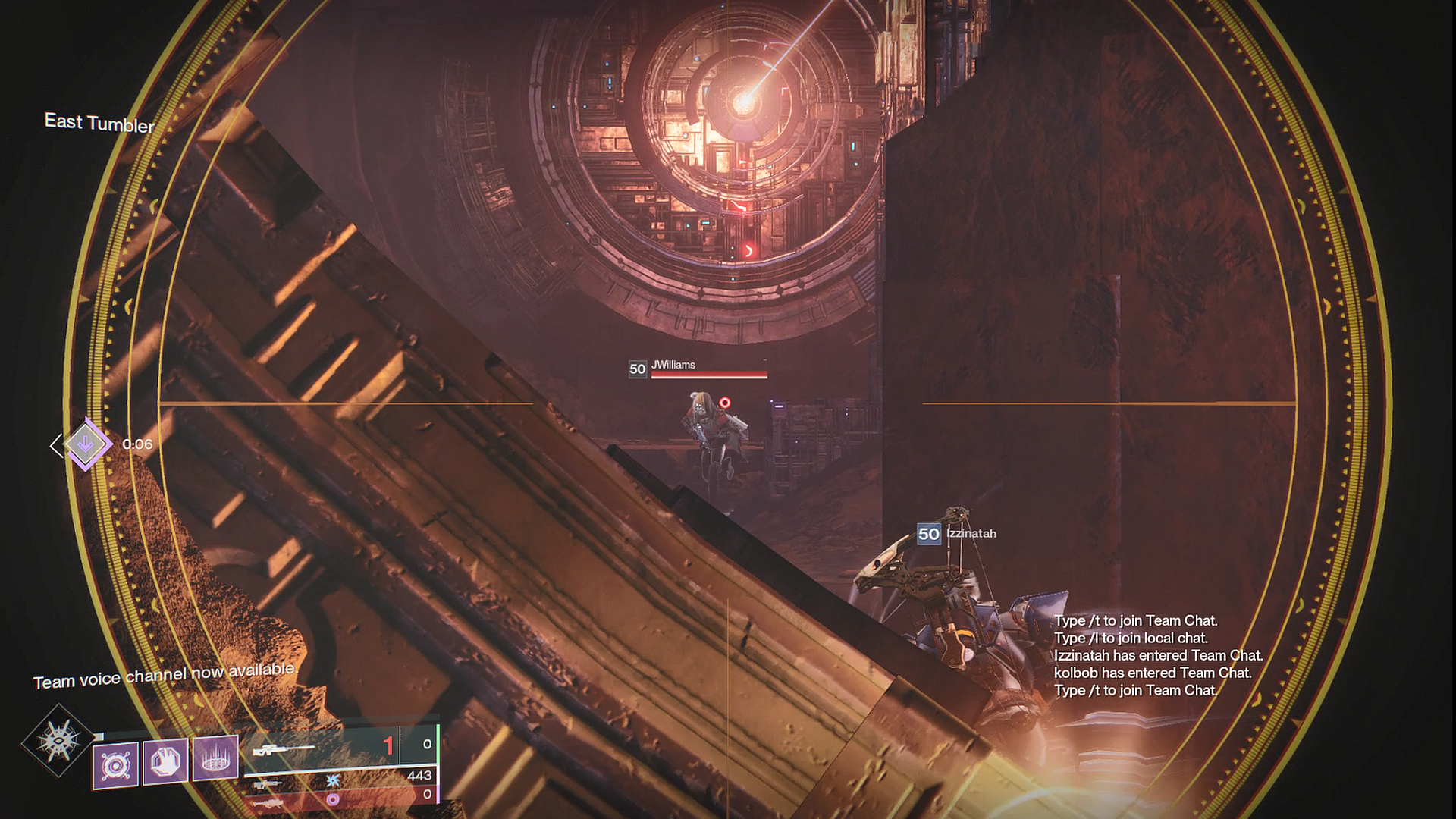Our Verdict
With a darker, more nuanced story, loads of activities, and clever tweaks to its core systems, Forsaken vastly improves the quality, quantity, and structure of content in Destiny 2. It could still peter out if the raid is bad or the DLC is as poor as last year's, but as of now, Destiny is fun again.
Here we go again. As it was three years ago, Destiny is in a dire state after a year of lacklustre DLC, and it’s on the September expansion to save it. This time, however, the community’s goodwill is that much more drained, and has never had a more tempting crop of alternatives. Warframe is going from strength to strength, Fortnite continues to amass streamers like chewing gum gathers hair on a barbershop floor, and both Anthem and The Division 2 loom.
Bungie’s response has been to be brave, announcing many bold changes. One of the boldest is kicking the story off by killing Cayde-6. It would’ve made a good climax, but instead, it’s a cunning hook: as community memes and memorials demonstrate, the loveable Hunter’s many fans have been invested in Forsaken for weeks already.
It sets up a story that’s more personal than the galactic threats of Dominus Ghaul, or Oryx before him, and is all the better for it. Fighting for survival often makes for a pretty dull plot; it’s morally uncomplicated, and tends to unite people. But Forsaken begins as a mission of either justice or vengeance in Cayde’s name, and the thin line between the two is a theme that recurs in meaningful ways. One low-spoiler example is the wedge it drives between his surviving comrades: Ikora wants retribution, and can’t abide the supposed cowardice of ignoring an attack on one of their own. But Zavala insists on pragmatic restraint, and on defending Earth’s Last City from the villains who escaped space-prison alongside Cayde’s murderer.
Said murderer is Prince Uldren of the Reef. In the first game, he was an ally – albeit an unwilling one, not to mention a prizewinning tool – so his actions in Forsaken raise many questions. But even if you lack that context, Bungie soon establishes that Uldren is not all he seems by teasing a possible motive and then subverting it. It’s handled much better than Ghaul’s arc in Destiny 2. The writing has improved too, with most of the cringeworthy cliches confined to an exuberant Cayde-6 as Bungie sends him out on a high: “Sorry, not sorry!”, “Ok, now I’m pissed!”, “Just another day at the office!” Urgh. Thankfully, what follows is deliciously, refreshingly dark, and easily the best story Destiny has told (not that that’s a high bar to clear).
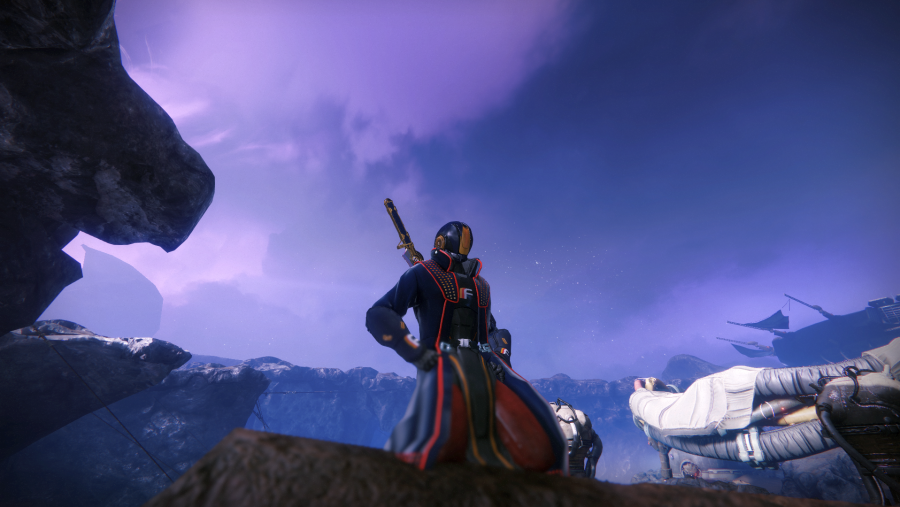
A hateful eight
You’re soon forced to explore the first of two new locations, the Tangled Shore, by running errands for Spider – a corpulent, cunning Fallen. With its luminous purple skybox and barren wastes, parts of the Tangled Shore are as gorgeous as any other Destiny planet, but much of it is occupied by over-familiar Fallen dens. The two new public events here are great, though, and most of my post-campaign time so far has been spent in the utterly stunning Dreaming City, so the Tangled Shore doesn’t outstay its welcome.
The campaign deviates again from Destiny’s customary linear structure when you’re asked to hunt down Uldren’s Barons, six of whom are placed on the map as Adventures – a type of side-quest. Accordingly, they can be completed in any order (though they do have ascending power levels), and can be repeated at any time. This is a conscious effort to give Forsaken’s story content more replay value than previous once-and-done campaigns. All told, there are only five traditional missions, but if you add the six Barons and Spider’s open-world ‘test’, it’s not much shorter than the vanilla campaign.
Unlike many Destiny bosses, the Barons have personalities. The Trickster is a cackling Rita Repulsa, the Mad Bomber a petulant child, the Rifleman a cocky blueblood who threatens to put your Ghost on his wall next to Cayde’s. It’s hardly Shakespeare, but shouting at my PC feels a bit less daft when the shape on the screen is a humanoid alien who’s been insulting me in English, rather than a mute space worm, or a robot sphere who may or may not have been talking to me.
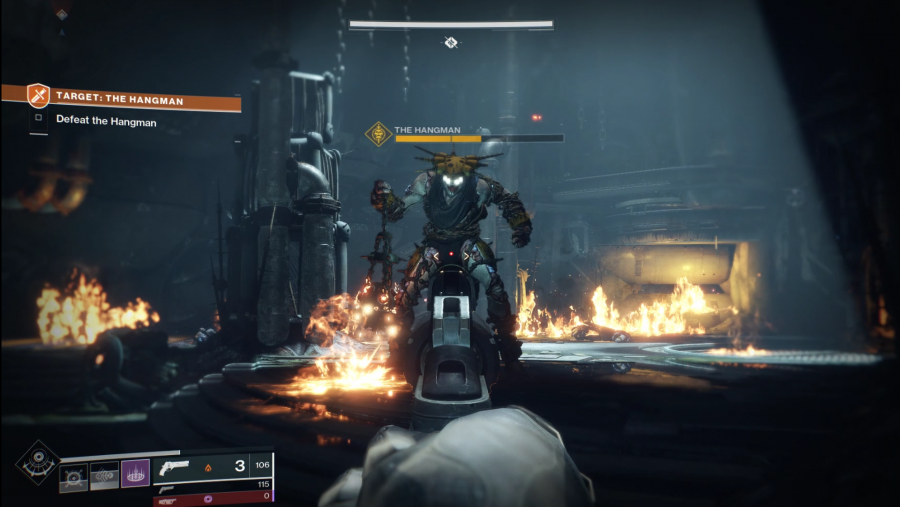
In combat, each Baron has a gimmick or two, though there’s a risk of overstating their impact. They don’t really ask much of you. One can clone himself, one goes invisible and can lay mines, and one shoots cluster missiles that you need to dodge via the radical tactic of moving. Beyond these gimmicks the Barons are the same bullet sponges we’ve been killing for years. They may be among the best fights in a Destiny campaign, but that only exposes how limited Destiny’s single-player content is. (An exception is the Rider, who you fight on a gun-toting jetbike through a series of ever more confined arenas.)
This would bother me more, but Forsaken’s much-publicised shake-up of weapon slots has raised the baseline of its combat. Sniper rifles, shotguns, the odd grenade launcher, and the excellent new bow mix freely with the old staples in slots one and two, and combat is more varied and, simply, more fun as a result. I can plug half a dozen Acolytes with thumping hand cannon headshots before pulling out a shotgun to smoke a Knight at close range and then drop a rocket on a horde of Thrall. So yes, the campaign is still easy, but at least it’s not boring any more.
A little anarchy
Many assumed that the slot system which Forsaken unpicks was designed
with PvP in mind, since Bungie never got sniper rifles and shotguns to feel balanced in Destiny 1. With those guns proliferating and random perk rolls also having returned, it’s probable that overpowered weapons will once again emerge, have their time in the sun, and then get nerfed.
This didn’t happen in the past year to the extent it did in Destiny 1, when it could be serious enough to bury non-meta playstyles – Suros Regime, Vex Mythoclast, Felwinter’s Lie, Thorn, both high- and low-impact pulse rifles… the list goes on. The worst of these metas practically pushed all other weapons out of the game, none were much fun, and it’s not clear how Bungie intends to avoid it happening again. We can only hope it’ll somehow be handled better, but it’s interesting that Bungie has chosen to rest the hardcore Trials of The Nine mode for a little while. If indeed balanced PvP was the reason Bungie reoriented the entire PvE game, it seems the studio has revised its priorities.
The Crucible more generally is unrecognisable compared to the plodding pace of last September. Global reductions in time-to-kill have made sub-second kills the norm. This means bad engagements are harder to escape, which rewards positional sense. A slightly stronger headshot bias – and it wasn’t exactly weak before – further rewards gun-skill, while global increases to movement speed have radically hastened matches. This is especially true in quickplay, which is now 6v6 with shorter respawn times. It’s as adrenaline-flushed as Call of Duty without being quite so aimlessly chaotic. This is why the addition of more playlists, including free-for-all Rumble, is so welcome – there’s a much broader range of competitive experiences on offer now.
Something for everyone
Another of these is Forsaken’s new ‘PvPvE’ mode, Gambit. Two teams of four kill aliens and race to ‘bank’ the motes they drop. First to bank 75 motes summons a boss, first to kill the boss wins the round. A portal activates periodically as you progress, through which you can invade your opponents’ map and kill them. It’s accessible, offering something to fans of both PvE and PvP, yet also deep, as opportunities for team synergy abound. Matt reckons it’s Bungie’s best idea since Halo, and I’m inclined to agree: it may be the most original feature in Destiny, and it’s terrific fun. I’ve played enough to acquire a full set of Gambit armour and I’m not even close to bored.

If you count the Corrupted, which is yet to unlock, Forsaken also adds three new Strikes compared with The Taken King’s four (not counting PlayStation-exclusive ones in both cases). Of the two that are currently playable, the Hollowed Lair has one of the better final bosses, but is otherwise fairly by-the-numbers – and said boss has the nerve to berate you for killing his friends, which rankles slightly when coming from an equally murderous alien in a game where you’re never given a choice to do anything else. Warden of Nothing is much better – a section where you have to dodge oncoming trains is exactly the sort of thing you’ll laugh at your mates for screwing up, and there’s some fun verticality later in the level.
Incentivisation
There’s more, and Forsaken saves the best for last. After finishing the campaign you can unlock the Dreaming City. It’s an achingly pretty place: a cosmic Rivendell of alabaster domes and purple crystal, mirrored by a dark other-dimension where it conceals some of its many secrets. With all this content and the raid still to come, Forsaken is Destiny’s meatiest expansion to date – comfortably bigger than The Taken King. But as the base game demonstrated, even the best content can be devalued without incentives to play it, which is why Forsaken’s revision of those incentives is perhaps its biggest success.
You’ll hit level 50 and 500 power (i.e., gear level) not long after the campaign, at which point further power will come only through the new ‘Challenges’, which replace last year’s Milestones. Challenges come in both weekly and daily varieties, and are attached to a wide variety of content, including Heroic story missions, Strikes, Crucible PvP, Gambit, and open-world Flashpoints.
What this means in practice is that more of Destiny’s many activities are relevant and rewarding than ever. For me, Destiny 2 degraded into a humdrum weekly ritual: log in after the reset, spend Tuesday evening on the same Milestones, log out. Forsaken looks like it‘ll break up this schedule, with practically every login offering something different to get you toward the power cap.
The Chase
Assuming that’s your goal, of course. There’s so much else to ‘chase’ – to use Bungie’s term – it’s almost overwhelming. A look at the new Triumphs and Collections tabs on your UI shows just how much of your activity is now measured and put toward a goal. Every gun, armour piece, and shader in the game has a menu entry, which is unlocked if it has dropped for you. You can then make a copy at any time, unless it has random perks. This means you can scrap all your year-one gear for precious vault space, safe in the knowledge that you can simply recreate it from the menu at close to your current power level (thus sidestepping the infusion system, which, on a sour note, has been made frustratingly expensive). It’s a wonderful quality-of-life feature.
To add yet another reward loop, most vendors offer bounties now. These are one-stage quests made of mindless busywork, hiding behind the thinnest veneer of narrative justification: “enemy activity has heightened here lately [it’s the same as ever, of course] so kill 50 Fallen,” for instance. As absurd as they are if you stop and think about them, their inclusion rarely grates, as they can be completed while you tackle a more meaningful task. Seeing a bounty or a Triumph pop while you’re doing something else is a pleasant endorphin kick that keeps you engaged.
Thanks to all these activities, underpinned with overlapping reward systems of varying prominence, Destiny is finally hitting one of its stated goals: there really is a worthwhile activity for every mood. Destiny is fun again – believe me, I’m as surprised as you. After last year, especially the borderline insulting Curse of Osiris DLC, I was sceptical of Forsaken. But I needn’t have been.
verdict
There’s still space for Forsaken to fail. The raid will be essential to its longevity, and it might suck. Six months from now, Anthem or The Division 2 could blow Destiny 2 out of the water. Or somehow, despite the revised loot system, we might not see another grind-worthy gun bubble up from the community (shoutout to anyone else who grinded Dragon strikes for a Hopscotch Pilgrim). Bungie could alienate fans with another XP-throttling scandal, miserly seasonal event, or disappointing DLC. Being a Destiny player has always been a wild roller coaster of exciting highs and crushing, frustrating lows. As ever, we can only say what we know now.
And right now, we’re on a high. Forsaken brings huge improvements to the quality, quantity, and structure of content in Destiny 2. It’s time to accept that Destiny will probably never meet the astronomical expectations we all had – and which Bungie invited – ahead of the original. But with Forsaken, it feels like Bungie truly understands the game that it has made. It’s expensive, especially if you don’t already own the base game, and it’s far from flawless, but it is Destiny’s highest form so far. Is it another Taken King? No. It’s better.
